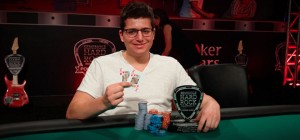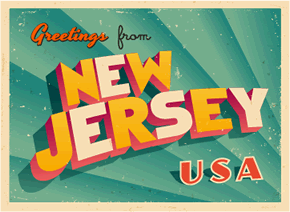SHRPO Update: Daniel Colman wins Main; Seminole Honors $2.5 Million Overlay
 One Drop winner and anti-spokesman Daniel Colman has added yet another seven-figure plus score to his growing list of tournament accolades.
One Drop winner and anti-spokesman Daniel Colman has added yet another seven-figure plus score to his growing list of tournament accolades.
In what would amount to his third tournament win and seventh final table of 2014, Colman would best a 1,499 entrant field en route to winning $1,446,710 and the coveted Seminole Hard Rock Poker Open Main Event title.
At this point, it would be safe to say that the 23-year-old poker pro from the small town of Holden, Massachusetts is officially on a rampage.
Colman’s victory caps off what probably amounted to the most bizarre and eventful week in SHRPO, and arguably, recent poker history – one that featured a massive overlay, a stacked final table, one missing boss and yet another Scott Seiver rant.
SHRPO dishes out unprecedented $2.5 million overlay
Simple math reveals that 1,000 entries were necessary for the SHRPO Main Event to reach its lofty $10 million guarantee.
Eh, wait a minute. So you’re telling me that the buy-in wasn’t 10 grand, but five?
Unfortunately, what that means is that the Main came up 501 entries – or $2,500,500 – short of fulfilling its preset goal. But didn’t last year’s event draw nearly 2,400 entries and a nearly $12 million prize pool? As we’ll soon see, sometimes all it takes is a few small variables to transform a guaranteed hit into a complete dud.
Even though Thursday’s Day 1A only registered 334 entries, there was still no need to hit the panic button. But then Day 1B only drew 443 entries. Panic engaged.
Could tournament directors really expect nearly over 1,200 entries for the final starting flight? Not on this day.
Day 1C would still prove to be most popular of the three starting flights, drawing 722 entries and creating a prize pool of…$10,000,000, nearly a quarter of which would have to be put up by the house. Suffice to say, the remaining players were joyous. The tournament directors, not so much.
$2,500,500 – that’s a lot of rakeback. But give the Seminole credit, they honored the hit like the true champions that they are.
So what went wrong?
The Seminole were victimized by their own poor planning. To elaborate:
- It was assumed that hosting the Main Event during Labor Day weekend wouldn’t detract players from attending. It did.
- The buzz surrounding last year’s unprecedented announcement that there would be a $10,000,000 guarantee for a relatively small buy-in was noticeably absent this year.
- The highly regarded and well publicized EPT Barcelona Main Event would reach its conclusion just one day before flight 1A of the SHRPO Main Event. That was hardly enough of a turnaround time for most players, even for those who busted early.
- On a similar note, the WPT Legends of Poker out in Los Angeles would not reach its end until the 29th, leaving only three days for WPT grinders to make their way to the Borgata for the next stop on the tour.
- And…both the Playground Poker Festival Main Event in Montreal and the WinStar World River Poker Series in Oklahoma were in direct competition with the SHRPO.
- The Main Event’s generous 600 big blind starting stack and 40 minute early levels severely limited the need for reentries.
Taken together, these factors led to the largest overlay in recorded live tournament history.
Whoops.
Colman’s path towards victory
Although this year’s SHRPO Main Event was ripe with amateurs and enthused hobbyists, Colman’s path towards a third major title could hardly be considered a walk in the park.
First off, he would have to navigate through approximately 1,000 players just to reach the final table. Compare that to his other tournament victories, which featured tough, but smallish fields.
Secondly, the final table of six was stacked with a bevy of elite pros, including former November Niner John Dolan, established tournament grinder Mike Leah and WPT title holder Shawn Cunix.
Put it this way: When the least known player at the final table recently final tabled a $3,000 WSOP bracelet event, you’ve got problems.
Colman would start the final table, which by the way was streamed live on PokerStars.TV, second in chips. It was a position he would retain for much of the final table’s early rounds.
Several hours would pass before the first elimination occurred. That happened when Martin Hanowski shoved his remaining 15 big blinds in the middle with K-Q of diamonds. Hanowski was snapped off by John Dolan’s Jacks, and the hooks held.
Despite mounting a tenacious comeback, Joe Kuether would be sent to the rail in fifth place after his top pair fell victim to Colman’s pocket Aces. It was at this point that the youngster with an aversion to media attention would vault into the spotlight…and the chip lead.
Minutes later Dolan dropped in fourth; a victim of an ill-timed hero call against the hyper-aggressive Colman.
Although Colman had amassed a sizable chip advantage, grizzled pro Mike Leah would fight back ferociously, eventually calling down Colman’s all-in bluff with one pair to regain the lead.
Soon after, Cunix would overplay K-7 of spades in a three-bet pot, only to be picked off by Colman’s A-10. Colman’s flopped top two pair would all but send Cunix out the door. Needing to hit a miracle gutshot on the river to make broadway, Cunix’s hopes would be dashed by the lowly 8 of diamonds.
I’m sure the nearly $750,000 he received for his third-place finish will numb the pain. Maybe next time.
And then there were two. After swapping the chip lead numerous times throughout the heads-up affair, Colman would get max value holding a 9-5 on a Q-5-5-3-9 board. Now holding a more than 3-1 chip advantage, it would be only a matter of time before Colman would deliver the death blow.
That came when Leah 4-bet shoved Q-J of clubs right into Colman’s Big Slick. The best unpaired pair in Hold’em would hold, rendering Colman the winner.
It would mark Colman’s fourth top three finish in two months, vaulting him into number 3 on the all-time tournament earnings list – past Phil Ivey. For perspective, Colman began the year in 1,972nd place.
When asked about his victory, Colman had this to say: “…”
The Super High Roller Fiasco
We wrap up our coverage of this year’s SHRPO with a bizarre story involving a missing boss and one disgruntled curly haired, outspoken, poker genius.
After only 9 players signed up for Labor Day’s $100,000 Super High Roller, officials informed players that only two spots would be paid. This stood in firm contrast to what was outlined on the tournament sheet, which indicated a minimum of three payouts.
Towards the end of Day 1, the floor reversed its stance, stating that in fact three places would be paid.
Seiver went bananas. So much so, that tournament officials would revert to the original payout structure – which would presumably work out well for Scott, who held a massive chip lead at the time.
Other players weren’t so pleased with the change, prompting SHRPO officials to add $50,000 in prize money to the pool, which would be reserved for the third place finisher.
The generous gesture on the part of the Seminole would up its total losses on the weekend to $2,550,500. But at least the players appreciated it.
Ironically, it would be Seiver that would be the beneficiary of the resolution, as he would bust in third place.
By the time the smoke cleared, Jake Schindler ($570,375) would defeat Ryan Fee ($307,125) in what amounted to the most expensive Sit & Go the live tournament circuit has ever seen.
In a strange twist, at the time of the dispute tournament officials informed players that the man in charge of making critical poker decisions was apparently on vacation. F5 Poker postulates that he may have been on “permanent vacation” after the Seminole were forced to payout a $2.5 million overlay.
What a week.






